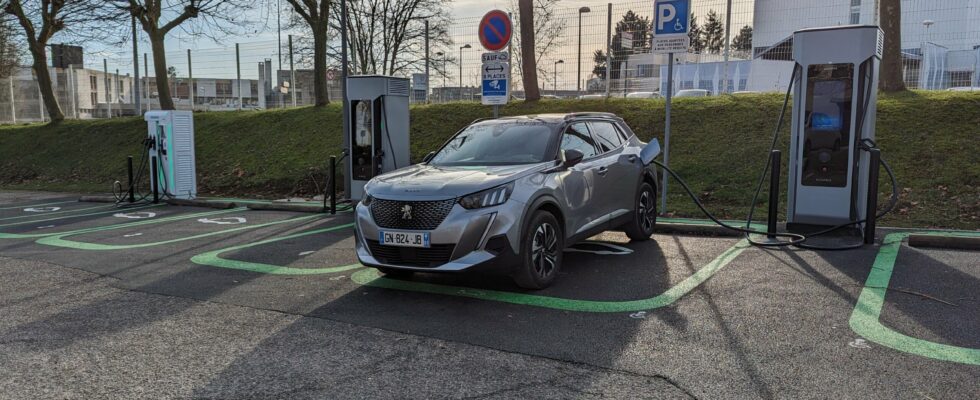It is an established fact: over its life cycle, an electric car will pollute much less than a thermal equivalent. This does not mean that we should rest on our laurels, and some charging networks offer 100% renewable energy. We decided to see things more clearly by exploring Dream Energy, which is developing its network of fast terminals… and producing its own renewable electricity at the same time. Enough to make electric cars even less polluting.
This is a subject that we like to discuss on Frandroid: yes, an electric car is cleaner than a thermal car over its life cycle. Certainly, the extraction of materials necessary for the manufacture of the battery pollutes. However, the figures are there, with a “shift” at 45,000 km and a total carbon footprint 45% lower than a thermal equivalent over a complete life cycle.
A balance sheet that can only improve with clean electricity. Certain charging networks have thus positioned themselves in this niche, such as Dream Energy, which also produces renewable electricity from hydroelectric or photovoltaic plants in France. We set out to discover them.
From the source…
Supplier And producer
Dream Energy, then. Founded in 2007 as a subsidiary of Arpea, a real estate holding company, the company was originally an environmental design office responsible for creating buildings that consume the least energy possible. At the same time, it is developing an activity for the production and supply of renewable electricity, of hydraulic and photovoltaic origin.
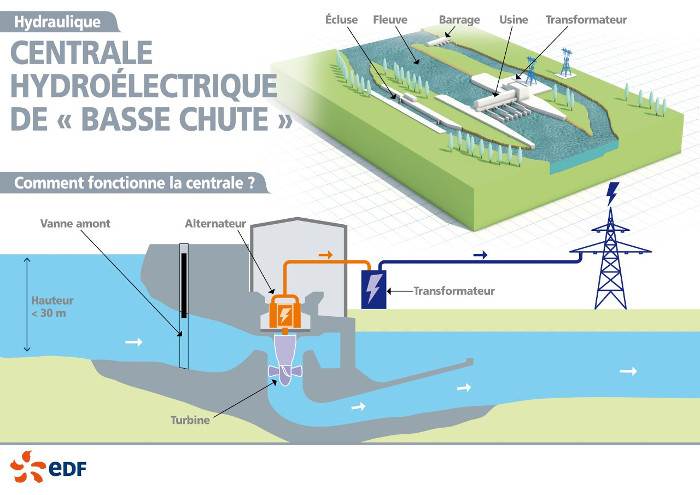
For hydraulics, the idea is to buy existing power plants throughout France and renovate them almost exclusively internally (only the turbines are purchased externally). Work which now allows us to have 20 hydroelectric power stations and 50 photovoltaic power stations. Annual production? More than 50 GWh (enough to recharge 1 million batteries with a capacity of 50 kWh), and in continuous expansion.
The idea: to be able to control the entire process of supplying electricity, while being able to boast of offering electricity produced in France, with an extremely low carbon footprint. According to ADEME, it is necessary to count 6 gCO2eq/kWh for hydraulics and 38 gCO2eq/kWh for solar (because of the manufacture of the panels). Compare to 250, even 300 gCO2eq/kWh of gasoline. That’s for practice, let’s move on to theory.
The example of Baccarat
So we have an appointment at Baccarat, not far from Nancy. A city known for its crystal (and the high-end finishes of Renaults from the 90s, but that’s not the subject), and which interests us today for… its hydroelectric power station.
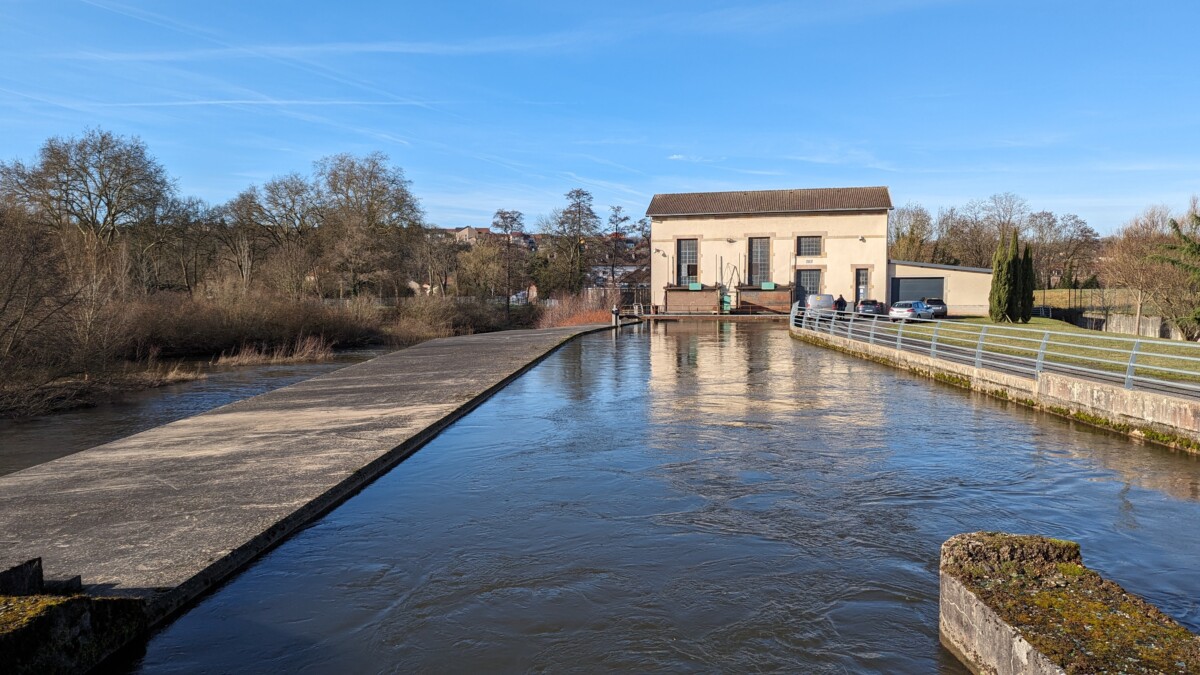
“The power station was built to power the crystal factory in 1927”explains Baptiste Roy, responsible for energy production and supply, “but Dream Energy bought it in 2021”.
An installation that falls into the “small power plant” category, with an annual production of around 2.3 GWh/year. Enough to travel around 13 million kilometers in a standard electric car, such as Tesla Model 3!
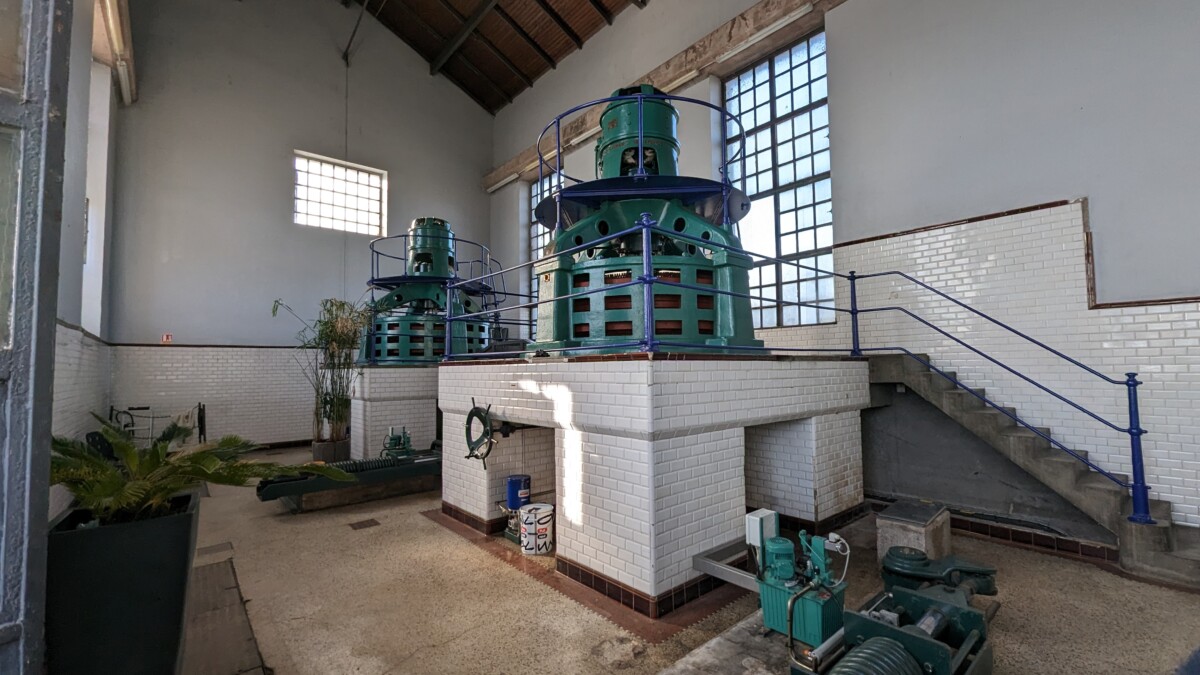
The station itself is made up of two Kaplan turbines with a power of 300 kW each, which turn thanks to the current of the Meurthe which passes just in front. Upstream, a system of valves and valves makes it possible to regulate the water level to achieve optimal production while respecting (many) environmental standards.
What is the competition doing?
Certainly, other charging station operators (like Ionity) also display this promise of renewable energy, but most only buy renewable electricity in Europe without producing it, according to the formula “ I buy as much green energy as I consume » in the form of CO2 credits. A fairly opaque market, which can sometimes cause abuses – such as indirectly financing fossil fuels.
Other systems are also being deployed abroad. We are thinking here of Tesla and Nio, who also pride themselves on becoming producers of renewable energy thanks to their batteries via smart grid and virtual power plants.

If Tesla uses the duo “solar tiles – stationary batteries (via its Powerwall)” to produce energy and be able, if necessary, to reinject it into the network, Nio uses its battery exchange stations to store and provide electricity. Note that Tesla is going a step further, since it has also become an electricity supplier in Texas and Japan.
Even though Dream Energy obviously cannot promise that the electrons it produces will end up at the end of the socket it has installed, its role as producer of renewable energy allows it to have a sort of “traceability” and ensure French production. The catches, here.
…to the car
An expanding network
A quick look back in 2021, where the decision is made: Dream Energy is launching into the rapid charging of electric cars. The company had already been supplying Artea business parks with slow terminals (up to 22 kW in alternating current) for several years, but the temptation to explore the wonderful world of fast terminals was too strong.
Since 2021 and a first station installed in Vesoul, Dream Energy currently has 13 stations, or 72 terminals. A goal of 300 stations (each comprising between 4 to 10 terminals) is planned in the long term, mainly in hotel and supermarket car parks.
“Locations that allow us to provide services while charging”, explains Nathan Dubois-Stora, the station development manager – let’s think of a small corner and catering here. Before adding: “we provide turnkey stations, without the parking owner having to pay anything”.
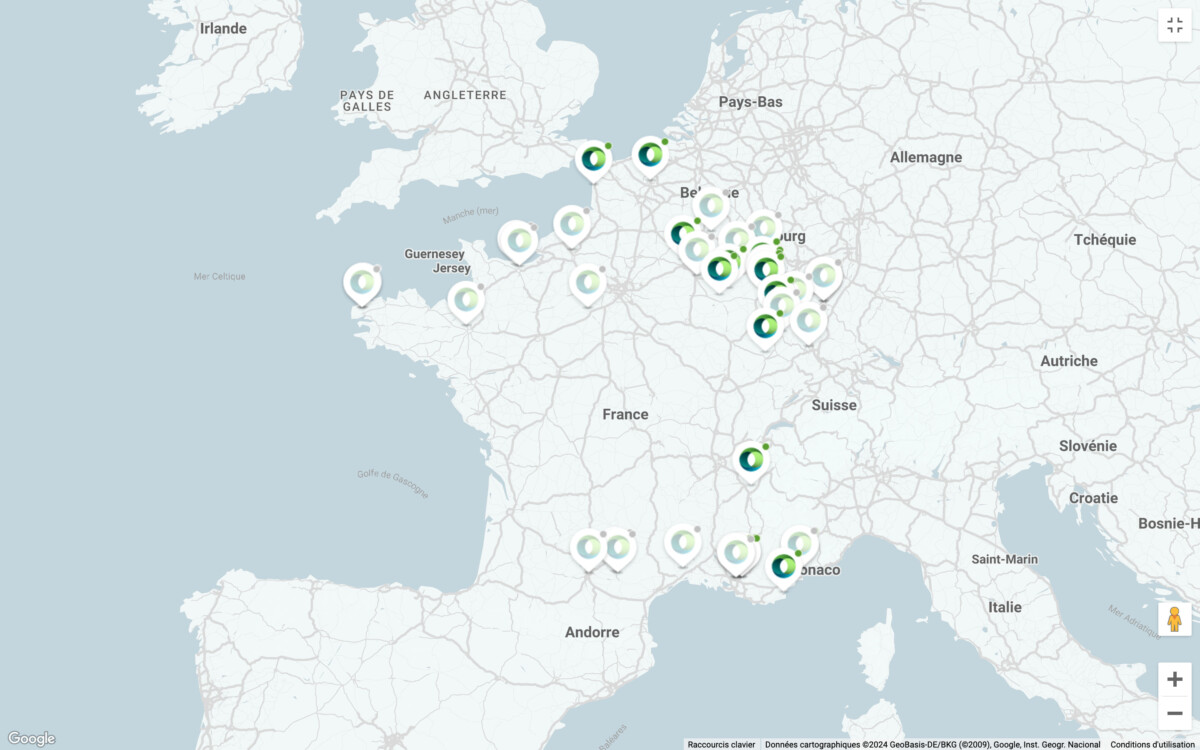
The price? 0.59 cents per kWh, a figure completely within the market. “Dynamic” pricing is being studied, as with Tesla Superchargers, in order to vary the price of charging depending on the day – particularly when energy is abundant and cheap. A strategy clearly developed by Ionity in parallel.
Of course, Dream Energy puts forward as its flagship argument its dual role as producer and supplier of renewable energy, while highlighting its modern and powerful stations. Of which act.
The example of the Nancy – Laxou station
Let’s go and discover one of them, not very far from the Baccarat power plant. It takes place in the parking lot of a hotel on the outskirts of Nancy, where three brand new terminals, not even stickered yet, await us. Featured are two Siemens SichargeD terminals with two CCS sockets each.
High-performance terminals, since they can reach a maximum power of 300 kW (with power sharing if two electric cars are connected simultaneously) and 1,000 volts (perfect, therefore, for models equipped with an 800 volt architecture , like some Kias and Hyundais, but also Porsches).
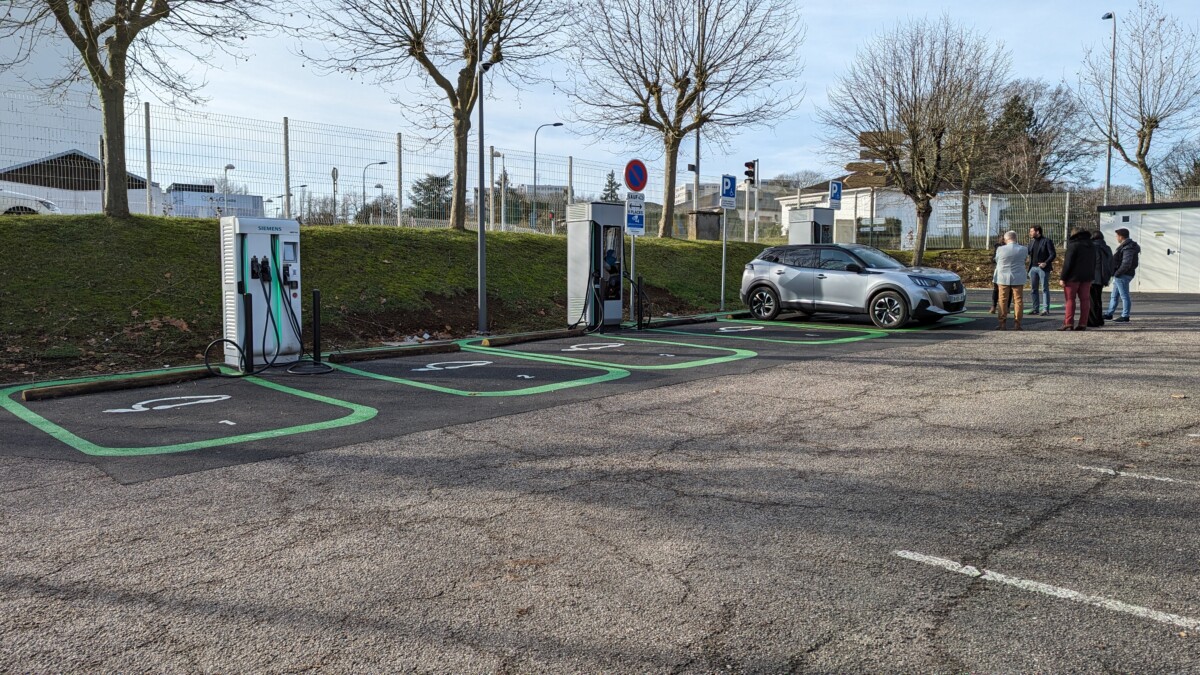
In parallel, a third multi-standard terminal is installed, including a 120 kW CCS socket, a 50 kW CHAdeMO and a third Type 2 in 22 kW alternating current (if you don’t understand anything, we have made a recap of all the sockets available).
“A mandatory terminal for each fast charging station”Nathan Dubois-Stora tells us, “and which we probably would not have installed if the regulations did not exist” – rightly: apart from the Nissan Leaf and the Lexus UX300e, two niche models using a CHAdeMO socket, all electric vehicles compatible with fast charging sold in Europe have a CCS socket.
How is a station set up?
The opportunity is too good not to delve into the details of installing and sizing a fast charging station. It all starts with a connection request to Engie, where the load operator will list the specifications of the station – including the number of kVA, which will determine the subscription that Engie will invoice the operator. For that of Nancy – Laxou, for example, we are using 1,000 kVA. More than enough to power the 720 kW that the 3 terminals can require instantly.

Source: Jean-Baptiste Passieux – Frandroid

Source: Jean-Baptiste Passieux – Frandroid
Once this request is accepted, a prior declaration is written – it is basically a “lite” version of a building permit, due to the reduced footprint of the works. Then, wow! We install the transformer, the terminals, and wait for the connection to the network.
A fairly simple process at first glance, but which is still quite long: allow around a year between the connection request and commissioning of the station. Oh, and the costs? For this station with three terminals/six charging points and 1,000 kVA, the cost is around 500,000 euros all inclusive. Quite an investment, then. Even more when compared with the estimated costs of Tesla Superchargers, of the order of $42,000 per installed terminal.
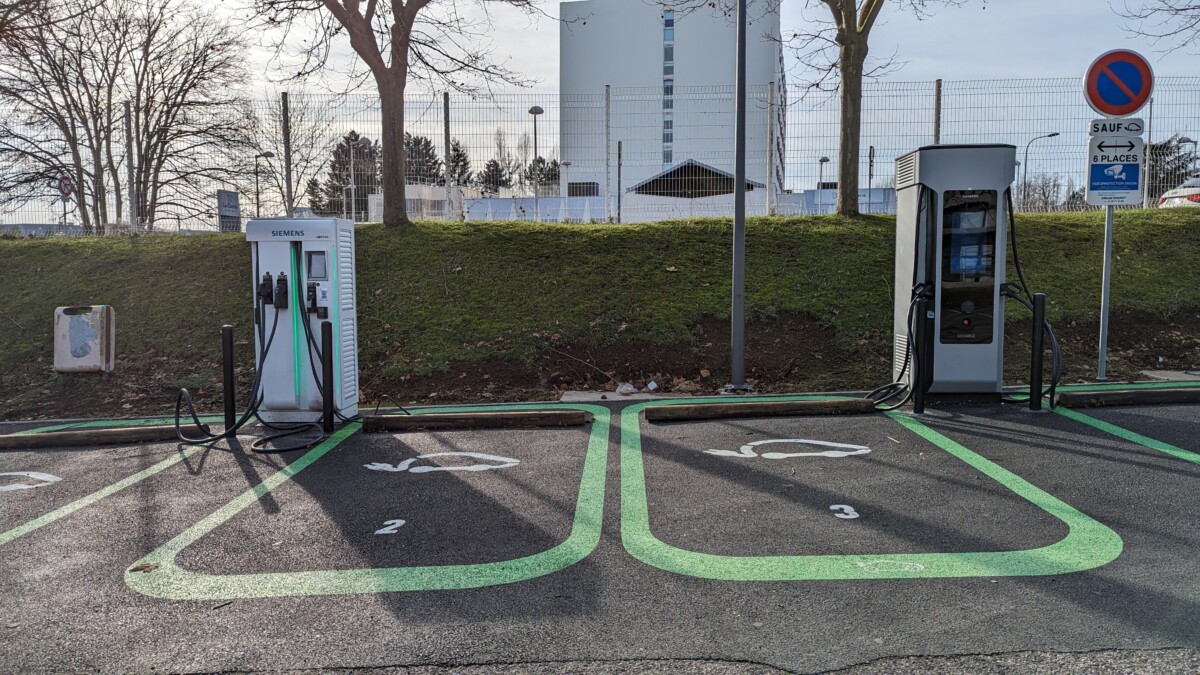
Asked about the possibility of installing a photovoltaic shade on the stations, like the latest Tesla Superchargers, Nathan Dubois-Stora is more doubtful. “It’s a solution that we can propose, but it is quite restrictive”he explains to us.
“In this case, you have to apply for a building permit, which takes a lot of time, especially since the benefits are minimal compared to the needs of the station: around 30 kW peak max with an installation that covers the three terminals, far from the power needs of the station ». So let’s focus on the power plants.
We say yes
In short, an initiative that we can only applaud, since it directly contributes to making electric cars even cleaner on a daily basis. And a sort of foretaste of the future, since energy mixes will only improve over time, with the arrival of innovative technologies at the same time.
Let’s talk here about V2G (which the Renault 5 E-Tech will offer, for example), which will allow you to use the battery of your electric car to power your home or the network as a whole. We are only at the beginning of the electric adventure, and the future looks exciting.
Want to join a community of enthusiasts? Our Discord welcomes you, it is a place of mutual help and passion around tech.
